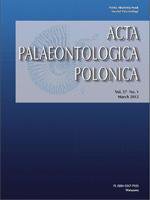In modern terrestrial ecosystems, the population size of large predators is low, and a similar pattern has usually been assumed for dinosaurs. However, fossil finds of monospecific, large theropod accumulations suggest that population dynamics were more complex. Here, we report two Early Cretaceous tracksites dominated by large theropod footprints, in Querulpa Chico (Peru) and Chacarilla (Chile). The two sites correspond to distinct depositional environments—tidal basin/delta (Querulpa Chico) and meandering river (Chacarilla)—with both subject to extensive arid or semiarid palaeoclimatic conditions. Although most trackways show no preferred orientation, a clear relationship between two trackmakers is observed in one instance. This observation, coupled with the high abundance of trackways belonging to distinct large theropods, and the exclusion of tracks of other animals, suggests some degree of grouping behaviour. The presence of freshwater sources in a dry climate and perhaps social behaviour such as pair bonding may have promoted interactions between large carnivores. Further, the occurrence of these two tracksites confirms that large theropod dinosaurs, possibly spinosaurids and/or carcharodontosaurids, existed on the western margin of Gondwana as early as the earliest Cretaceous.
How to translate text using browser tools
1 March 2012
Large Theropod Dinosaur Footprint Associations in Western Gondwana: Behavioural and Palaeogeographic Implications
Karen Moreno,
Silvina de Valais,
Nicolás Blanco,
Andrew J. Tomlinson,
Javier Jacay,
Jorge O. Calvo

Acta Palaeontologica Polonica
Vol. 57 • No. 1
March 2012
Vol. 57 • No. 1
March 2012
behaviour
Chile
Early Cretaceous
footprints
Gondwana
palaeogeography
Peru




